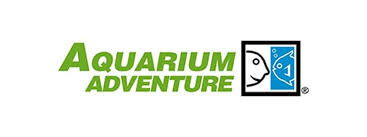The Geek Fish Corner 1
Freshwater - Africa
1. African Electric Catfish (Malapterurus sp.)
· A voracious piscivore
· Species only tank
· Get very large, upwards of 3’
· Can shock it’s owner and tank mates (this is fatal for the other fish in the tank)
· Aka “Sheathfish”
2. African Lungfish (Protopterus sp.)
· Found in ponds and lakes in Africa
· Feeds on fish, worms, krill, pellets, etc.
· Can live 20+ years
· Can get up to 3-4’
· Can take any temperature as long as it stays above room temperature
· They can breathe air (special organ that acts like our lungs)
Freshwater – Asia/Australia
1. Peacock Gudgeon (Tateurndina ocellicauda)
· From New Guinea
· Males – 2.75”, hump head, stronger jaw, red reflection in the eye
· Females – 1.95”, brighter yellow belly, pointed head,
· Males look after the eggs until they hatch
· 6.4-7.5 pH
· 74-80F
2. Kubotai Rasbora (Microrasbora kubotai)
· Hails from Thailand
· .75”
· Green/yellow body with clear fins
· Easily spawned
· Best in a small shoal of 10 or more
· Very new to the hobby
3. Betta Imbellis (Betta imbellis)
· Hails from Thailand
· Approximately 2”
· Peaceful, community fish (can go with other fish well)
· Densely planted with many floating plants
· Dark gravel brings out the colors
· Males are much more colorful than females
· 7.0 pH
· 77-86F
4. Cactus Loach/Striped Hillstream Loach
· Come under the Family Balitoridae
· Needs very fast water (incredibly adapted to this type of water flow)
· Do best in a well established tank
· They tend to have a ‘home’ spot, a spot that they always seem to go back to
· Feed mostly on algae, but will scavenge
· Sizes range 1.5-4”
5. Scarlet Badis (Badis bengalensis)
· Hails from India
· Closely related to bettas and gouramis
· The best way to keep them is one male, many males or in a heavily planted tank
· Females are very drab in appearance so it is hard to find them for sale
· Approximately 1”
· 7.0 pH
· 76-80F
6. Garra Flavatra (Garra Flavatra)
· Hails from Asia
· Feed on algae
· Best kept in groups
· Prefer fast water flow
· Can live 5-8 years
· 6.2-7.2 pH
· Approximately 2.5”
· 72-77F
7. Rainbow Desert Goby (Chlamydogobius eremius)
· Hails from Australia
· Up to 2.5”
· 40-100F (best in high 70’s)
· Do best with a sandy bottom
· Absolutely love Shrimp Pellets, but will eat just about anything
· Only live about one year
Saltwater
1. Bicinctus Clown (Amphirion bicinctus)
· Hails from the Red Sea
· Rarity in the aquarium trade
· Very hardy fish
· Goes best with a Bubbletip Anemone
· Grows to approximately 5.5”
2. Green Moray Eel (Gymnothorax prasinus)
· Is actually brown in color, but covered in a yellow mucus which makes it look green in appearance
· Is an ambush predator
· Feeds at night on fish, crabs, shrimp, octopuses and squid
· Can get up to 8’ and weigh 65 lbs
· Continually opens mouth to pull water in through its gills to breathe
3. Hutchi Anthias (Pseudoanthias huchti)
· Related to Sea Basses
· Plankton feeder – feed several times a day
· Keep singly unless in a 150-gallon tank, which then keep in a harem
· Strong water movement is preferred
· All are born as females – the dominant female turns into a male
· Get to be about 4”
4. Garibaldi Damsel (Hypsypops rubicunolus)
· Hails from the Pacific Ocean (Monterey Bay, Calif. to Guadalupe Island, Baja Calif.)
· Marine State fish of California
· Get as large as 12”
· Juveniles have blue spots which they lose as they mature
· Can change its sex when the male/female ratio is out of balance (a fish can do this many times in its lifetime)
5. Macolor Snapper (Macolor niger)
· Hails from the Indo-Pacific
· Extremely fast growing fish
· Needs a minimum tank size of 200-gallons
· Grows to an impressive 26”
· A carnivore and is NOT reef safe
6. Octopus (Octopus sp.)
· No internal or external skeleton
· A hard beak is found inside its mouth which is located on the underside between all of the arms
· Highly intelligent – probably the most intelligent invertebrate
· Will build “forts” and “traps”
· Defense mechanisms – hiding, fleeing very quickly, expelling ink, color-changing camouflage
· Bilaterally symmetrical
7. Red Fire Feather Duster Cluster
· Polychaete worm
· Not photosynthetic
· Vigorous water movement – so they can filter feed
· Do NOT lift out of water if possible (trapped gas can be a problem)
